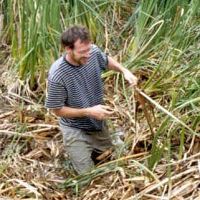Goulden et al., 2010
Mechanisms Controlling the Effects of Weather and Climate on California's Ecosystems (Invited).
Goulden, M., Kelly, A.E., Fellows, A., Winston, G. (2010)
Fall meeting, American Geophysical Union, December 2010. Abstract GC53A-01.
-
Sierra, INVESTIGATOR
-
Sierra, GRAD STUDENT
-
Reynolds, Sierra, INVESTIGATOR, COLLABORATOR
Abstract
We combined observations and manipulations along topographic gradients in southern and central California to understand how climate controls ecosystem function. California's topography causes large temperature and precipitation gradients as a result of orographic, rain-shadow, atmospheric lapse, and sea breeze effects. These gradients lead to a wide diversity of ecosystem types and provide a natural laboratory for understanding the controls on plant community composition and ecosystem function. Findings include: (1) Natural climate gradients drive large changes in species composition, plant phenology, growing season length, and primary production. The growing season at low, dry, and warm locations is limited by summer drought, resulting in low primary production. The growing season at high, wet, and cold locations is limited by winter cold, resulting in low primary production. The growing season at mid elevation is limited by neither summer drought nor winter cold, resulting in year-round and high primary production. (2) The relative importance of plant species within a community shifts rapidly in response to changes in water input, caused by either natural variability or experimental manipulation. Species that are intolerant of drier conditions decline rapidly with reduced water input, and may disappear locally; species that are tolerant of drier conditions increase rapidly in extent. (3) Inward plant migration, and the establishment of new species at a location, is a comparatively slow process. The initial phases of climate change will likely reshuffle the importance of existing species within the community, resulting in only modest changes in ecosystem function but possibly extirpating species that are intolerant of warmer and drier conditions, and reducing biodiversity. These declines in biodiversity and delays in species immigration may ultimately limit the ability of ecosystems to respond to subsequent interannual and decadal variations in weather, and to adjust to more extreme changes in climate.
Citation
Goulden, M., Kelly, A.E., Fellows, A., Winston, G. (2010): Mechanisms Controlling the Effects of Weather and Climate on California's Ecosystems (Invited). Fall meeting, American Geophysical Union, December 2010. Abstract GC53A-01..
Explore Further


